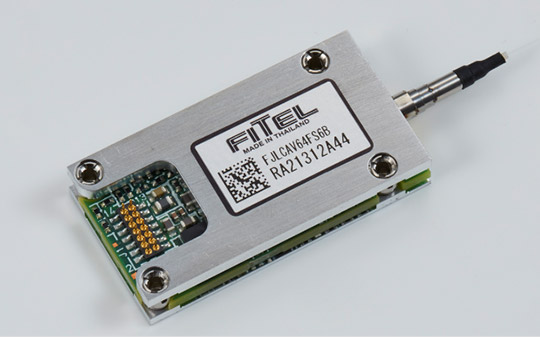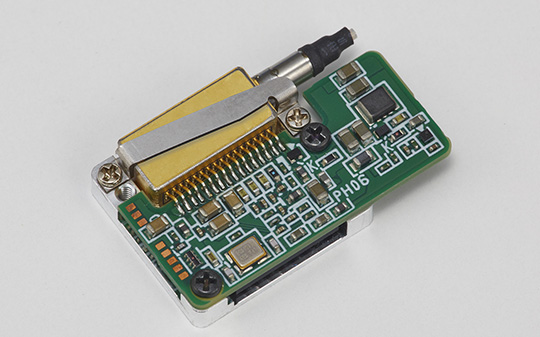Coherent communication is a method of transmitting signals using the phase and polarization of light, as opposed to the widely used method of transmitting signals using the strength and weakness of light. It is suitable for transmitting large-capacity signals over long distances because of its low signal degradation. Currently used optical digital coherent communication has been put to practical use since around 2010 by combining this method with digital signal processing technology.
IMDD: Intensity modulation - Direct detection
Send 01 by light On/Off → Inexpensive, but signal degradation over long distances and at high data rates

Digital coherent communication
Send 01 in phase of light → Low signal degradation even over long distances and at high data rates, but expensive

Configuration diagram
At the transmitter side, the light emitted from the Integrable Tunable Laser Assembly (ITLA) equipped with a wavelength-tunable laser as a signal light source is placed with a signal by a modulator and then transmitted over a fiber. At the receiver side, the signal is demodulated by interfering the received signal light with the local oscillator (LO), and ITLA is used in the LO as well as in the transmitter side.

Laser linewidth and optical power
In coherent systems, the phase noise of the signal source and LO, i.e., spectral linewidth, is an important characteristic. If the linewidth is wide, phase noise will increase and noise will be added to the signal. For higher speed and longer distance communications, a semiconductor laser with a narrower linewidth is required as a signal source.
In addition, faster modulators have higher optical losses, so signal light sources with higher optical output power than before are needed.
Main products
Distributed Reflector Laser (DR-LD) type Small form factor tunable laser based on the Optical Internetworking Forum (OIF)

Vernier-type ultra-compact wavelength tunable lasers based on Optical Internetworking Forum (OIF) that can be mounted on small transceivers (CFP2-DCO, QSFP-DD, OSFP)


